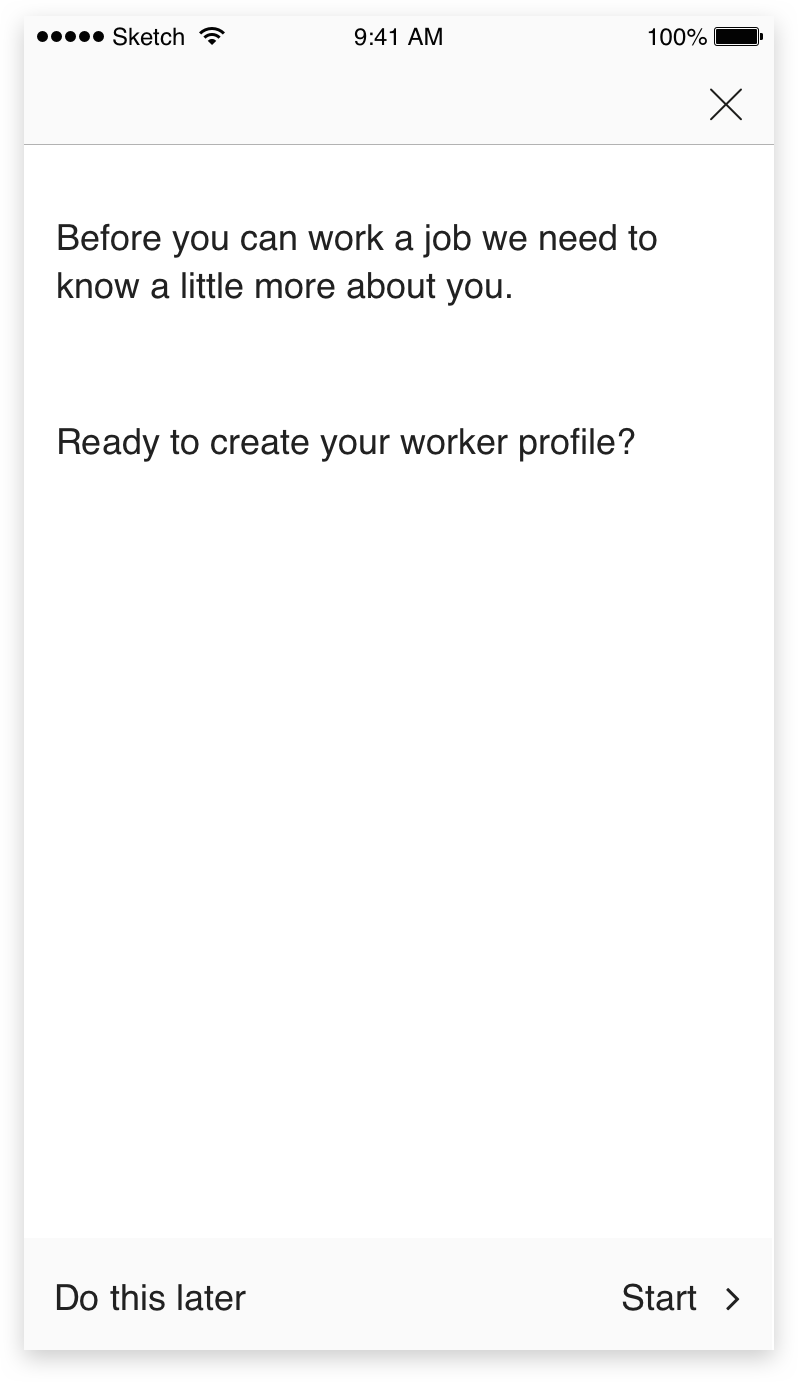
Spur Worker App - Onboarding
Spur is a PEO whose mission is to improve the quality of life of hourly workers.
To comply with my confidentiality agreement I have omitted and appropriated confidential information.
Challenge
At Spur, we wanted offer benefits, perks, and training to help hourly workers build a support system and give them the tools to achieve their goals. However, to do that we needed to to give workplaces incentive to partner with Spur. The obvious first step was to cut the cost of employment by automating the processes of hiring and managing workers. We decided to build the first ever W-2 onboarding system for hourly workers through a mobile app. The focus of this case study will be on the onboarding process.
Spur rebranded in 2019 so there are two distinct styles in this case study.
ROLE
When we first started developing onboarding for the Spur Worker app, I was working as a product designer and researcher. I worked with two other product designers on this feature as an individual contributor. When I was promoted to Head of Product Design my role for this feature became more managerial in nature.
Process
To kickoff the onboarding feature we created a workflow to document the steps required for hiring a worker in the U.S. The outcome resulted in six categories:
Identity Verification
I-9 Verification
Offer of Employment
Tax Information
Payment Information
Profile
Each of these steps offered different challenges throughout the product lifecycle.
Identity Verification
The first step for hiring a worker was to verify the worker’s identity. We chose to ask only one question per page to limit the complexity of any view. Reducing the number of choices a user has to make decreases the time it takes them to make a decision. The most difficult part of Identity Verification was building trust with users so that they felt comfortable providing information. There were three different methods used to build trust:
We provided as much information as possible to demonstrate we were an authority on employment.
We explained specifically why were were collecting sensitive information (like social security numbers), and what we would be doing with that information.
We made certain any technical issues with the app, especially during the onboarding process, were addressed immediately by the development team.

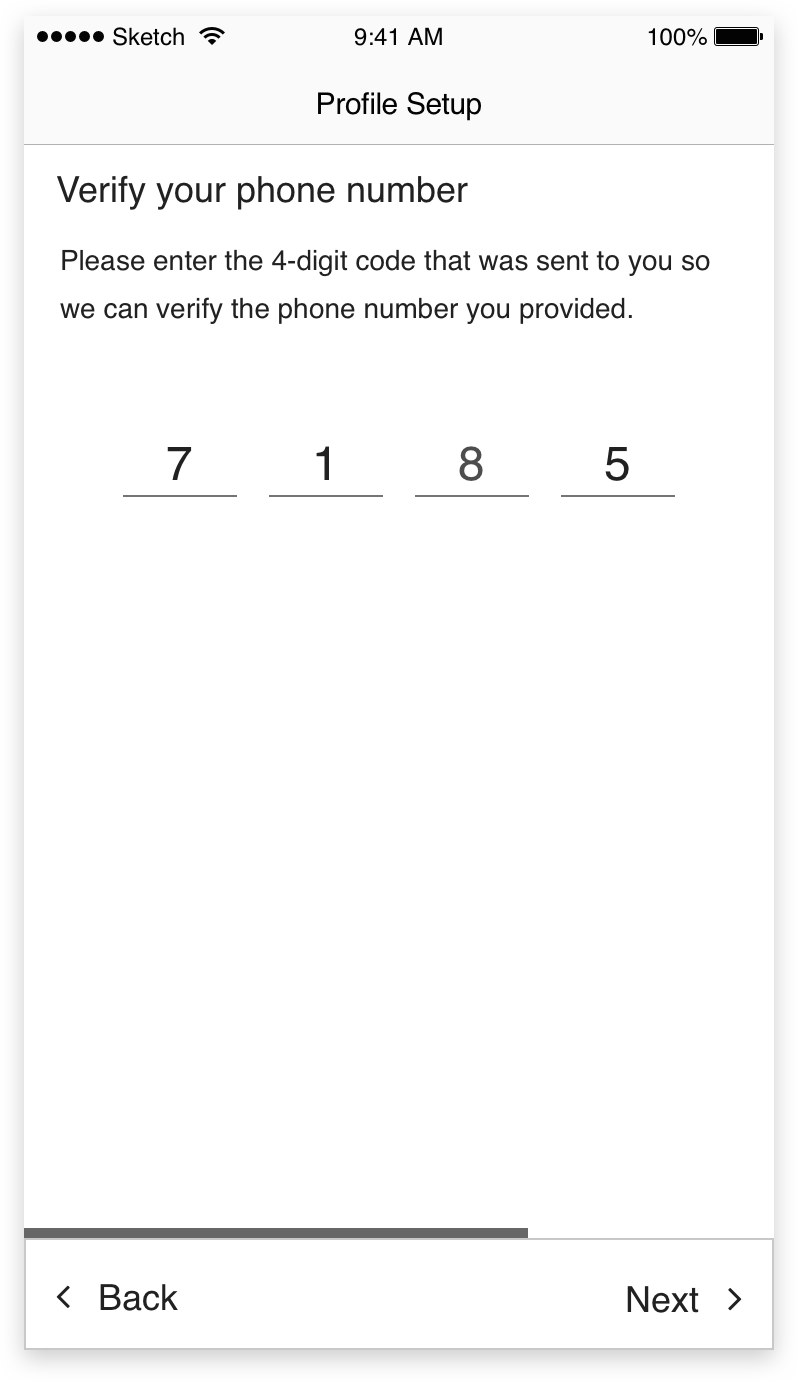



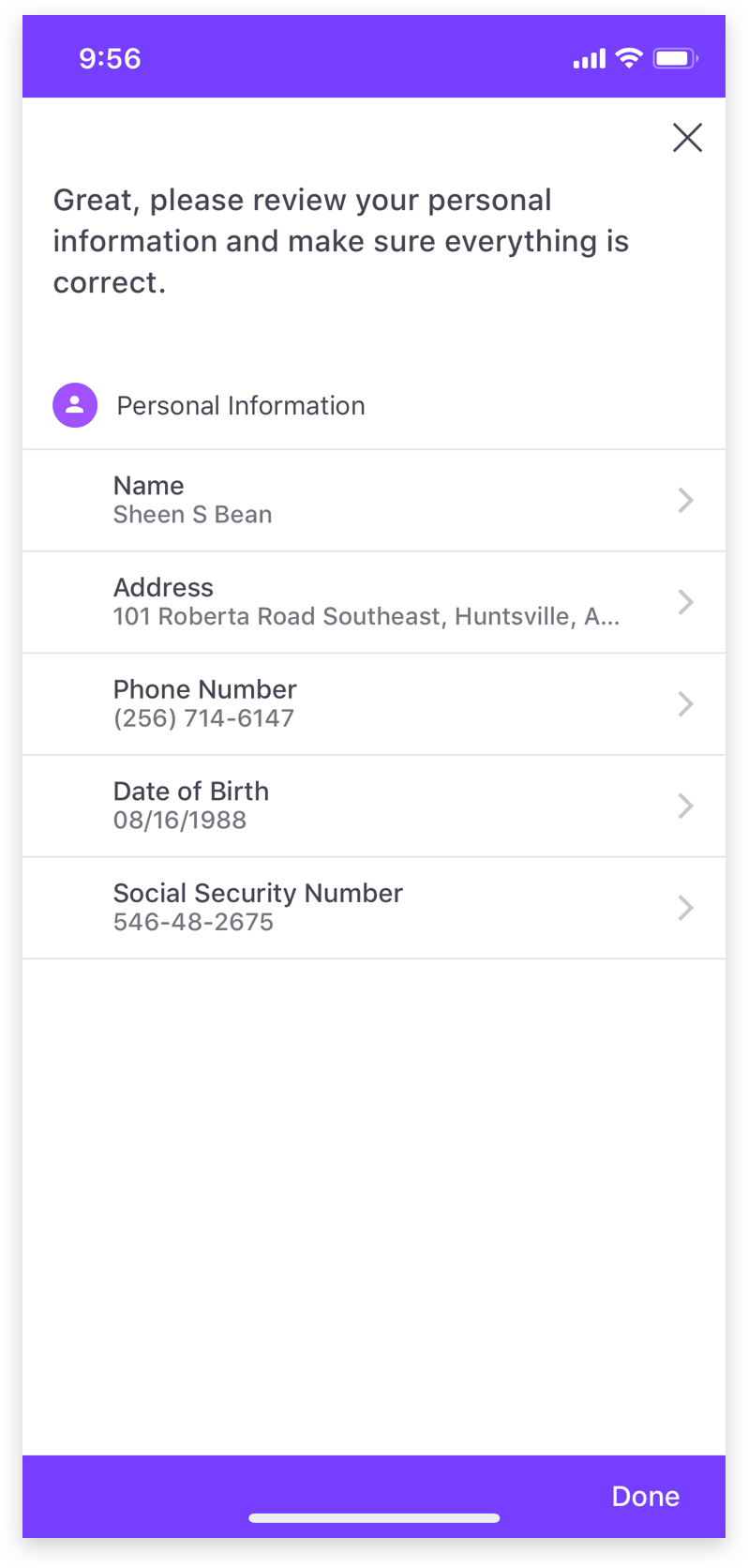
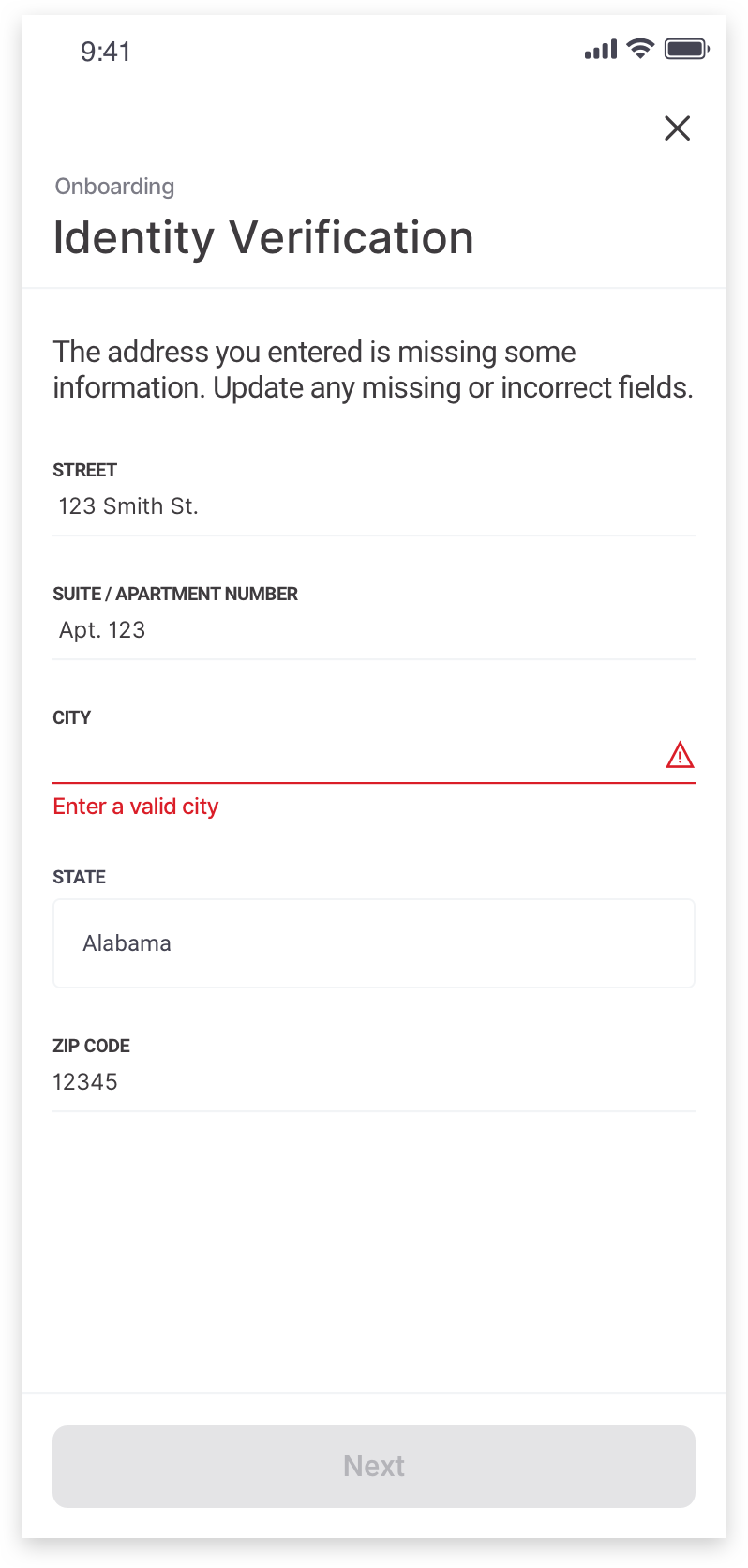


We then began usability testing the workflow with workers to identify any glaring issues. The first iteration of the Spur Worker app was built in Ionic. Ionic is a cross-platform tool for using web technologies to build native apps. At the time, our development team was predominantly comprised of web developers so this decision made sense logistically. However, from a user experience perspective Ionic was lacking. We were limited on animations, component usage, and styling. Here’s an example of a component that wasn’t quite intuitive to users:
I-9 Verification
When we first started Spur we were focused on helping 1099 contractors. At the time, it seemed like the fastest way to provide value to hourly workers without dealing with the red tape of being an employer. However, as we learned more about the laws and regulations around employment it became apparent that contract work wasn’t the best option for improving the lives of hourly workers. A few months later we decide to convert to a W-2 model.
The wireframes below are missing for I-9 Verification because that step of the process wasn’t needed for 1099 workers. The same is true for Offer of Employment, Tax Information, and Payment Information. By the time we moved to a W-2 model, a style guide, component library, and design pattern for the onboarding section had been established.




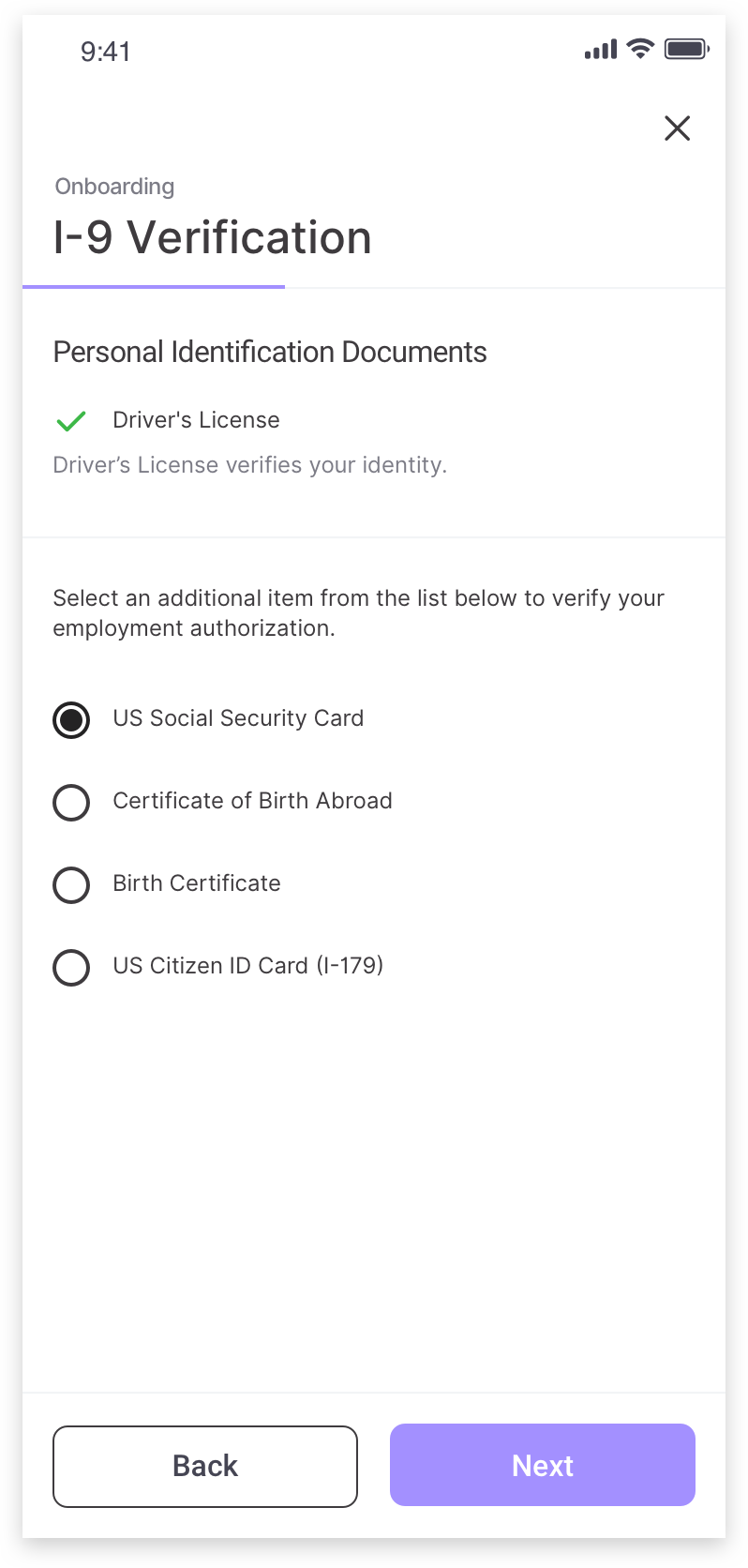

The hardest part of developing the I-9 process was explaining Helpers and their importance. A Helper is any non-family member who can verify that a worker’s identification documents are correct, legal, and not expired.
There are real consequences for submitting fraudulent I-9 documents. It was important that the language we used was clear, concise, and portrayed the gravity of the situation.
OFFER OF EMPLOYMENT
Legally, we needed workers to confirm their employment with Spur or a partnered workplace.


TAX Information
The next step was collecting the workers’ tax information. This was complicated for a few reasons:
Legally, employers can’t provide tax advice to their workers.
The forms workflow had many permutations.
We wanted to make sure workers understood what each question in the tax section was asking them, but we also needed to be legally compliant. We provided links to the actual tax documentation when we felt the question may be misinterpreted, and we would provide information in a format like:
“When figuring your 2019 estimated taxes and estimating your deductions, you may want to take into account that the standard deduction for all filing statuses has increased substantially, and many itemized deductions have been eliminated or the deduction amount has been reduced.”
It’s not advice on what to choose, but it gives perspective to the question so the worker can make an informed decision.






Documenting and building the tax forms needed for every state was not a trivial task. It was months of work and eventually required a team to be created to finish out the effort. From a design perspective, we provided a framework for the section, and built out the first state as a reference example.
Payment Information
The next step was collecting workers’ bank account information so that we could direct deposit their paycheck each week. Most workers could provide their account number off the top of their head, but finding the routing number for the bank was a different story. We built a validation tool for identifying banks’ routing numbers that only required the worker to confirm the information was correct.
Similar to the the Identity Verification step, we needed to build trust with the workers so that they felt comfortable providing sensitive information us. We were careful how we crafted helper text to ensure it was clear this information would be secure and safely stored.




PROFILE
The final step of the onboarding process was profile setup. This section was typical for any account setup. Initially, we asked workers a variety of questions about what they were looking for in a career. We soon learned through interviews that when workers reached this step they were fatigued from answering questions. We decided to move any career-related questions to a prompt after onboarding to increase response rates.






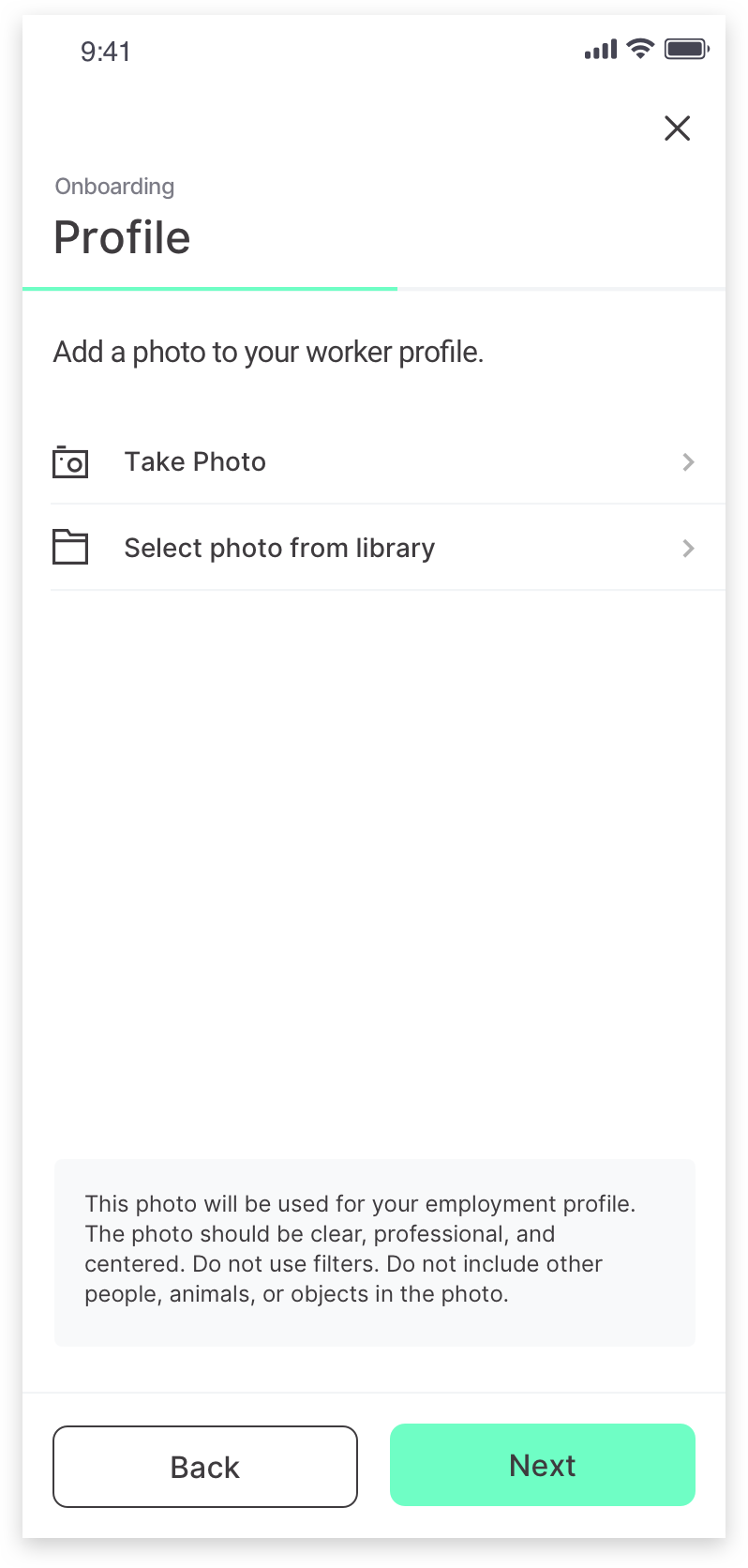


RESULTS
We had successfully created the first ever W-2 onboarding for hourly workers through a mobile app. We had taken a process which normally takes 1-2 days down to 10-20 minutes. The number of workers at a workplace was inconsequential because it took the same amount of time to onboard one worker as it did to onboard one hundred workers. This allowed us to reduce the overhead cost of onboarding events because the implementation teams required fewer people and less time on site to complete the process. In the future, we hope to evolved the process to a point in which we no longer need implementation teams.
LESSONS LEARNED
Default components are not always the best experience.
Providing technical helper text is tricky.
Test early and test often.

